This may seem simple but the solutions that I have found have only made it more complex. Below is the reproducible code that I am using. A bit circuitous but that is part of the learning experience. The result before adding the scale x continuous portion using 4 labels on the axis. I need every period (24 in total) to be shown. I will worry about the formatting and angle of the text later but am a bit stumped at this point. Upon including the scale_x_continuous item I get the following error:
Error in UseMethod("rescale") :
no applicable method for 'rescale' applied to an object of class "character"
#Data generation
Month1 <- c(201812,20191,20192,20193,20194,20195,20196,
20197,20198,20199,201910,201911,201912,20201
,20202,20203,20204,20205,20206,20207
,20208,20209,202010,202011)
annualjobgrowth<- c(44400,46000,42600,40500,42800,40500,36000,
34000,32300,29900,21900,24500,21000,
23300,16000,-6200,-275600,-249500,-149200,
-136500,-129900,-122800,-113900,-109500)
Rate <-
c(3.3,3.4,3.1,3.0,3.1,2.9,2.6,2.5,2.3,2.1,1.6,1.7,1.5,1.7,1.1,-0.4,
-19.5,-17.6,-10.5,-9.6,-9.1,-8.6,-8.0,-7.7)
cesyoy <- data.frame(Month1,annualjobgrowth, Rate)
#Chart
library(ggplot2)
library(dplyr)
library(lubridate)
library(scales)
cesyoy %>% mutate(year = substr(as.character(Month1),1,4),
month = substr(as.character(Month1),5,7),
date = as.Date(paste(year,month,"1",sep ="-"))) %>%
ggplot() + geom_col(aes(x = date, y = annualjobgrowth))+
scale_y_continuous()
secondces<-cesyoy %>% mutate(year = substr(as.character(Month1),1,4),
month = substr(as.character(Month1),5,7),
date = as.Date(paste(year,month,"1",sep ="-"))) %>%
ggplot() + geom_col(aes(x = date, y = annualjobgrowth),fill = "#00abff")+
scale_y_continuous(labels=comma,breaks=c(50000,0,-50000,-100000,-150000,-200000,-250000))
+scale_x_continuous(labels=as.character(x),breaks=x)+
scale_fill_brewer(palette="Dark2")
